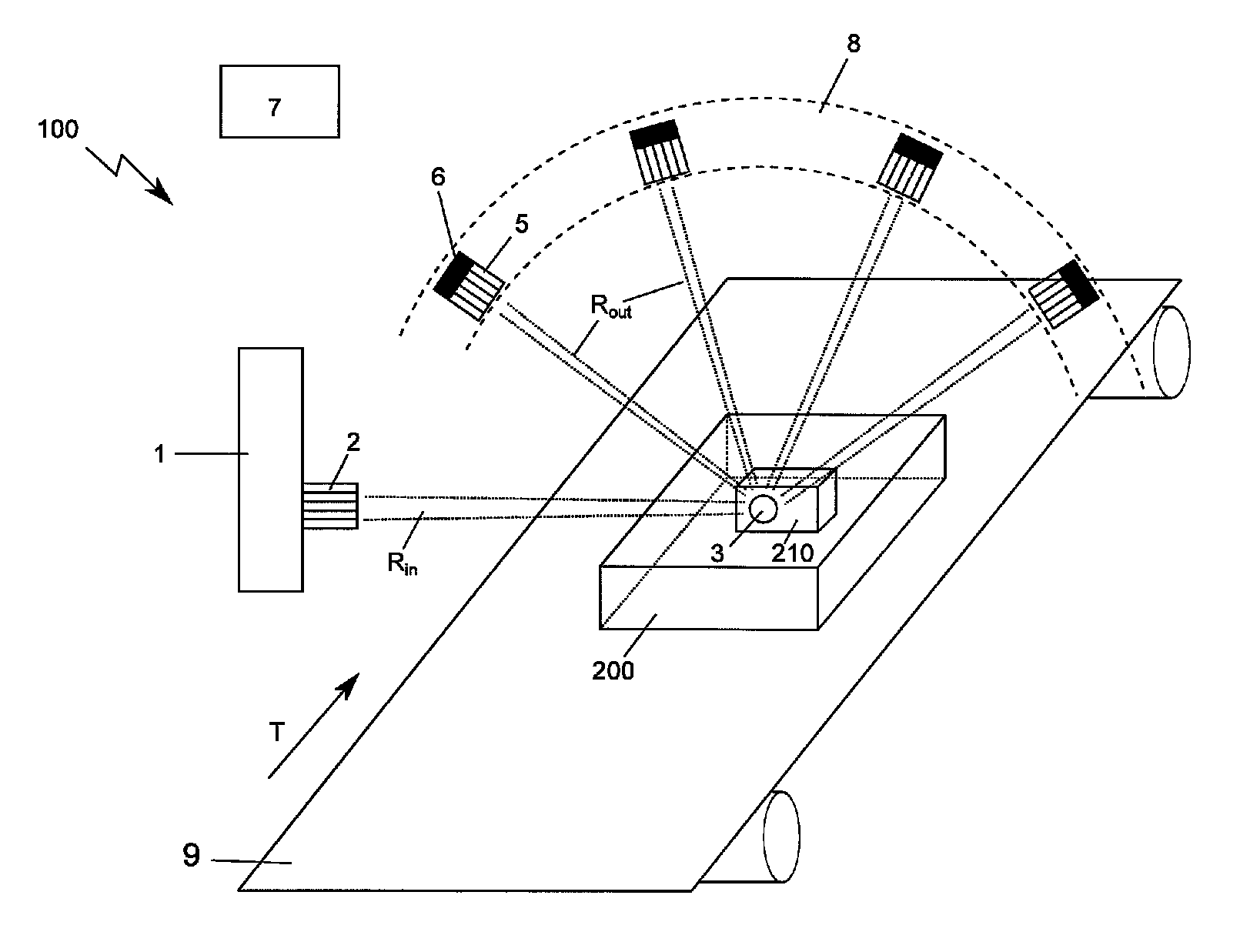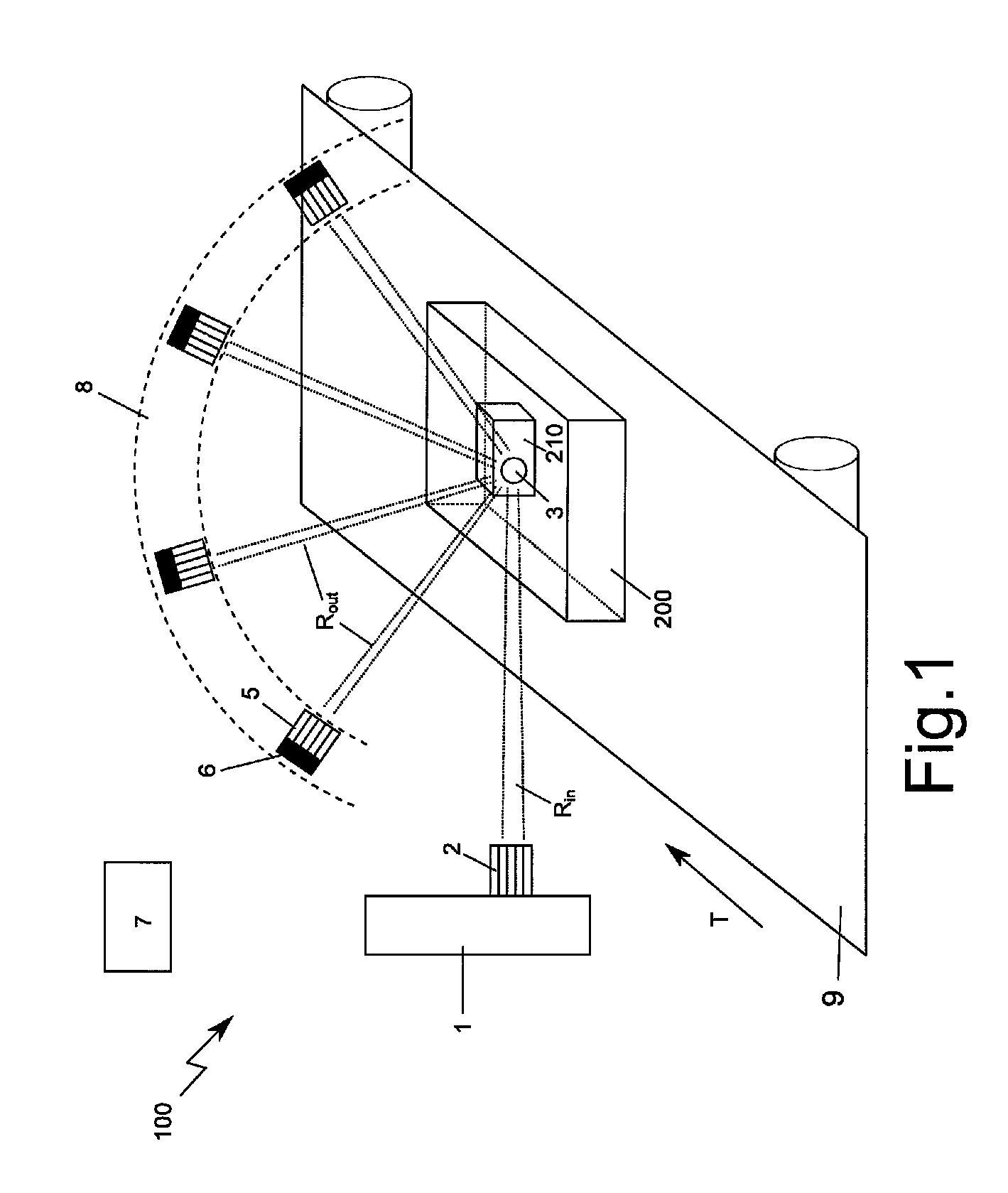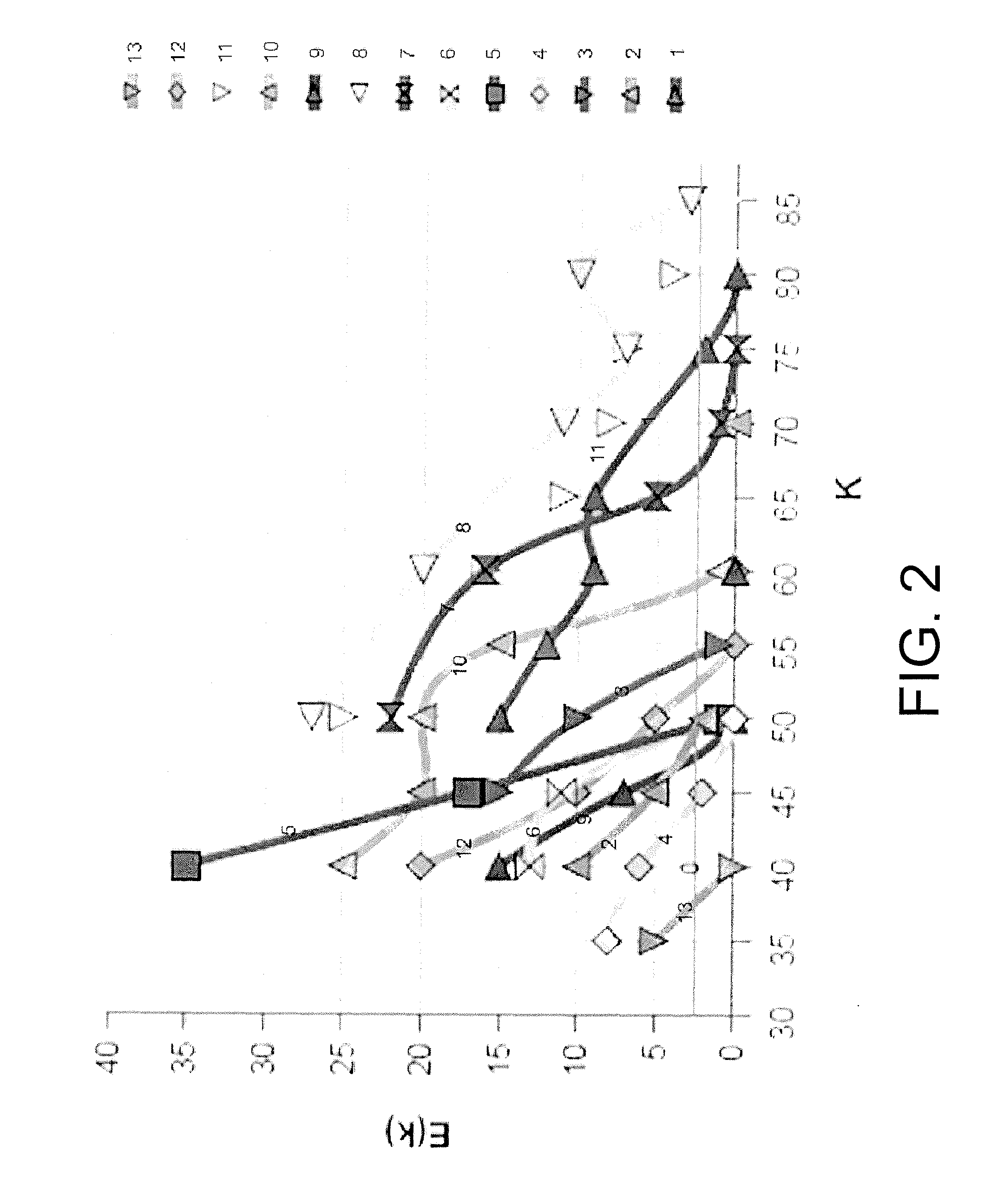Method and device for identifying unknown substances in an object
a technology of unknown substances and methods, applied in measurement devices, scientific instruments, instruments, etc., can solve the problems of difficult identification of unknown substances, severe constraints on methods and devices, and liquids are today seen as not generally solved, so as to save time
- Summary
- Abstract
- Description
- Claims
- Application Information
AI Technical Summary
Benefits of technology
Problems solved by technology
Method used
Image
Examples
examples
[0047]Some examples following from experiments are presented in table 1 below. The experiments have been performed with a tungsten X-ray tube at 100 kV high tension.
[0048]
Materialk-points (in degrees)Solid explosives60-70Plastics35-50Metals 80-140Liquids40-80Liquid explosives60-70Acids70-85H2O60Orange juice55Coca Cola55
[0049]Table 1 shows materials and corresponding angular value(s) for which the intensity of the elastic component of the scattered X-ray radiation is essentially zero. In general the intensity can be represented by values of Rayleigh (R), Rayleigh / Compton (R / C ratio), a gradient or any other functional representation of scattered X-ray radiation.
[0050]FIG. 2 shows the angular course of a function of Rayleigh intensity E(k) for several liquids. The liquids are identified by number in the list below. From FIG. 2 it can be seen that liquids can be identified by their k-points.
[0051]1=sodium chloride solution
[0052]2=motor oil
[0053]3=olive oil
[0054]4=thinner
[0055]5=whiskey...
PUM
| Property | Measurement | Unit |
|---|---|---|
| angles | aaaaa | aaaaa |
| angles | aaaaa | aaaaa |
| angle | aaaaa | aaaaa |
Abstract
Description
Claims
Application Information
 Login to View More
Login to View More - R&D
- Intellectual Property
- Life Sciences
- Materials
- Tech Scout
- Unparalleled Data Quality
- Higher Quality Content
- 60% Fewer Hallucinations
Browse by: Latest US Patents, China's latest patents, Technical Efficacy Thesaurus, Application Domain, Technology Topic, Popular Technical Reports.
© 2025 PatSnap. All rights reserved.Legal|Privacy policy|Modern Slavery Act Transparency Statement|Sitemap|About US| Contact US: help@patsnap.com



